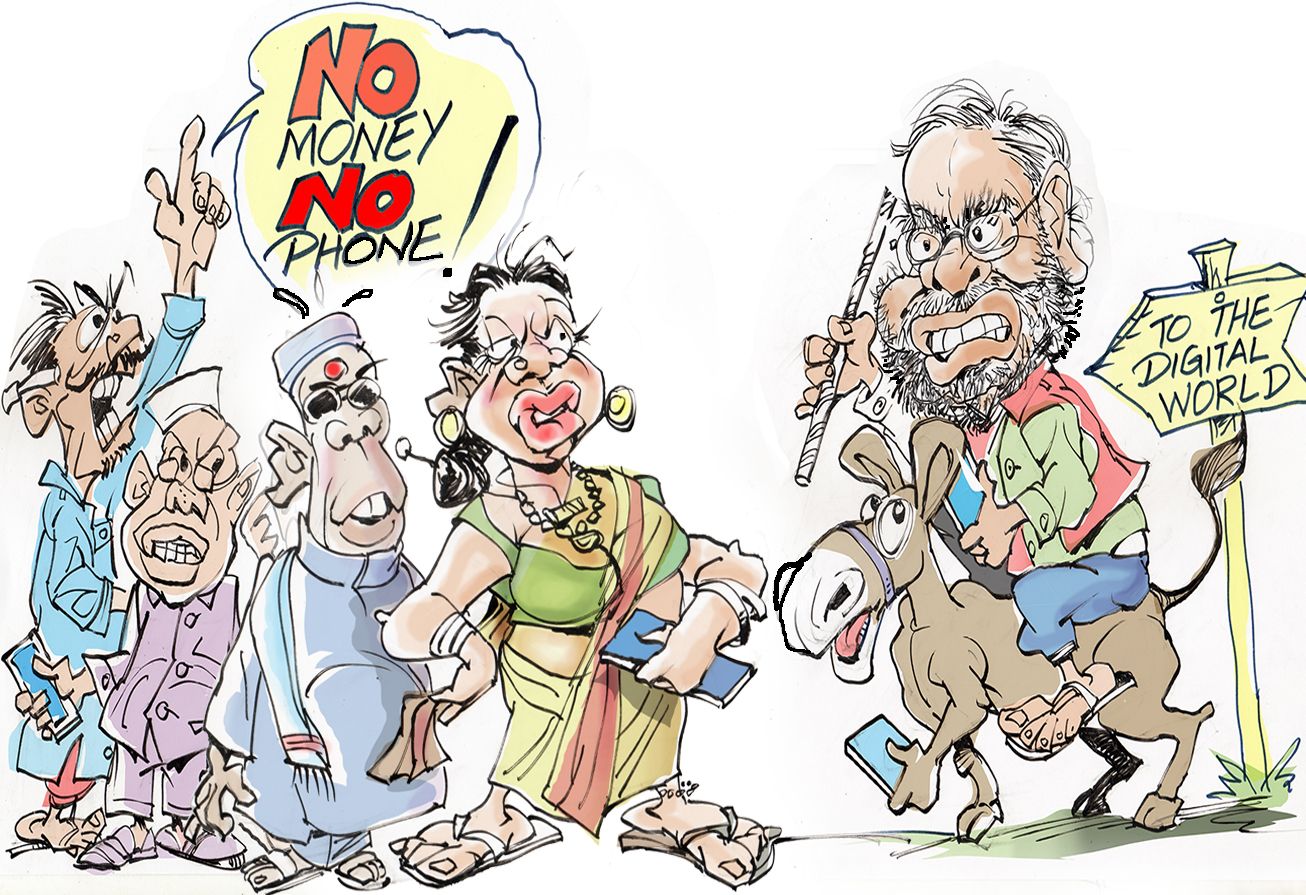
India’s demonetization experiment has been declared a failure by economic pundits. However, it has expanded India’s tax base and fast-tracked the digitization of payments, which is a good thing.
Pundits claim demonetization – announced last November on television by Prime Minister Narendra Modi with his typical sensationalist modus operandi – has failed because the bulk of demonetized notes were just replaced by new notes, and so the scheme fails to root out corrupt practices and tax evasion by holders of these relatively high denomination notes (worth US$7.5 and US$15 respectively). This is at least according to its framed intention.
However, much has been achieved by demonetization in India, even if it veered off from the mission statement. First, its signal achievement has been to expand India’s tax collection base. Some nine-million-odd new taxpayers came into the fold thanks to the scheme. Around 20 million new bank accounts were created by Indians panicked by the possibility of having their cash holdings voided.
Less than 2% of India’s population pays tax. More will be paying it as a result of the demonetization project – however cack-handed the execution of the scheme turned out to be.
Second, the scheme accelerated the digitization of payments in India, with a vast swathe of merchants forced to accept digital payments in lieu of cash. From that auspicious, perhaps originally unintended outcome, there can be no going back. And that is undoubtedly a good thing.
Indeed, demonetization is a good thing for all economies, according to Harvard economics professor Kenneth Rogoff. But it’s a good thing in particular for developing countries with parallel black economies where corruption and criminal exploitation is rife and where tax collection is abysmally low.
It might strike a seasoned India observer, who is used to the choking bureaucracy and red tape endemic to that country, to find that it is leading the way in the digitalization project, but in some ways it is. Modi’s demonetization programme represents an experimental case study and will be watched closely in the developing world for clues as to how to enhance tax collection and stifle the black economy.
Of course, all this is a precursor to the real wave which will break across the world when blockchain becomes the medium for all transactions and business contracts – something I imagine is on the cards within the next three to five years.
The rise of blockchain, which involves the use of a digital register which tracks an entire transaction history and which cannot be erased, is likely to be the biggest input into corruption and fraud eradication yet seen in global history.
Entrenched elites which have benefitted from the existing system, principally in the developing economies, both on the cash side and the offshore banking side, will be quaking as they contemplate the rise of blockchain, but I doubt there will be any escape.
In the meantime, whilst Modi didn’t achieve quite what he was looking for in the great Indian demonetization experiment, he showed the way the world is going to look as economies move en masse to a digital future.
Illustration by Sara Seneviratne.









